Sète
Type of resources
Available actions
Topics
INSPIRE themes
Keywords
Contact for the resource
Provided by
Years
Formats
Representation types
Update frequencies
status
Scale
Resolution
-
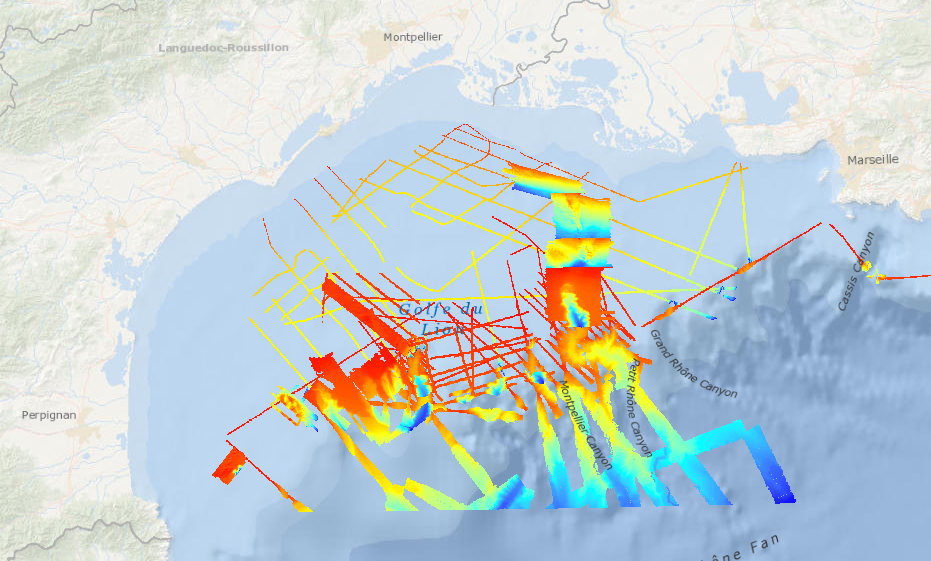
This bathymetric data package is being made available as part of the de-risking study to be carried out in the Gulf of Lion for the award of a "commercial floating wind turbine" call for tenders by 2022. It includes bathymetric digital models covering French territorial waters. Raw data have been acquired during oceanographic campaigns: AM-MED-1, BASAR2, BASAR3, RHOSOS et STRATAFORM 1.
-
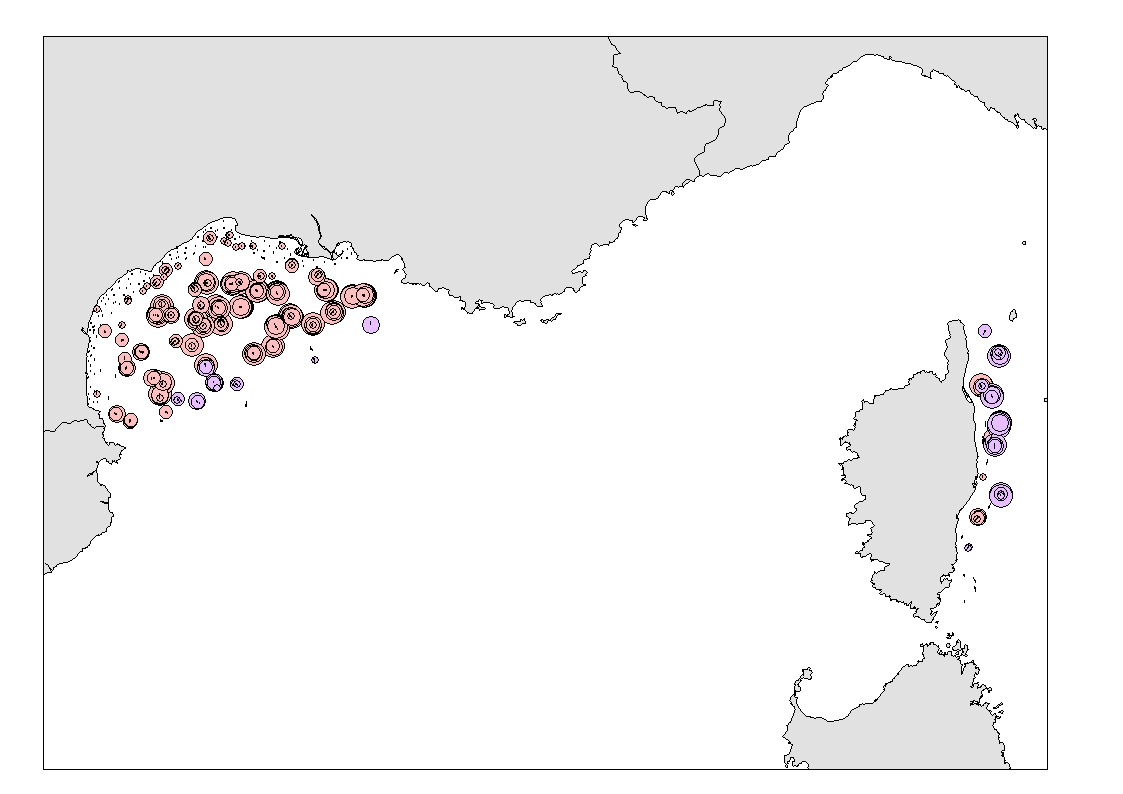
Density (number per km²) and biomass (g per km²) of Funiculina quadrangularis (Pennatulacea) and Isidella elongata (Alcyonacea) observed in bottom trawl scientific surveys (French MEDITS and NOURMED) by-catches from 2012 to 2019
-
In the Mediterranean deep-sea two scleractinian species, Lophelia pertusa (= Desmophyllum pertusum) and Madrepora oculata, make up the dominant structure-forming corals. The Lacaze-Duthiers canyon is the only French Mediterranean canyon where the two species L. pertusa and M. oculata have been observed living together in large quantities, the situation generally described for the biocoenosis of cold-water corals (CWC). In this canyon large colonies (more than 40 cm) of both species of scleractinians were observed at depths ranging from 246 m to 541 m at the head of the canyon and its western flank. The second canyon is the Cassidaigne canyon, where M. oculata seems to be the only structure-forming scleractinian there. The largest concentration of M. oculata colonies was observed on the west flank of the canyon along a crest at depths ranging from 200 to 210 m. Mature M. oculata colonies attained heights up to 40 cm. M. oculata were observed in three other canyons: Bourcart, Sicié and Var. In the Bourcart canyon, M. oculata was observed on a shelf of hard substratum at 331 m depth. Several single branches protruded from a slab. In the Sicié canyon a 15-cm colony of M. oculata was observed at 255 m depth, while in the Var canyon, three young branches 2 cm long were seen growing at 350 m depth on a wall of hard rock. Data linked to the publication Fabri et al, 2014. https://doi.org/10.1016/j.dsr2.2013.06.016.
-
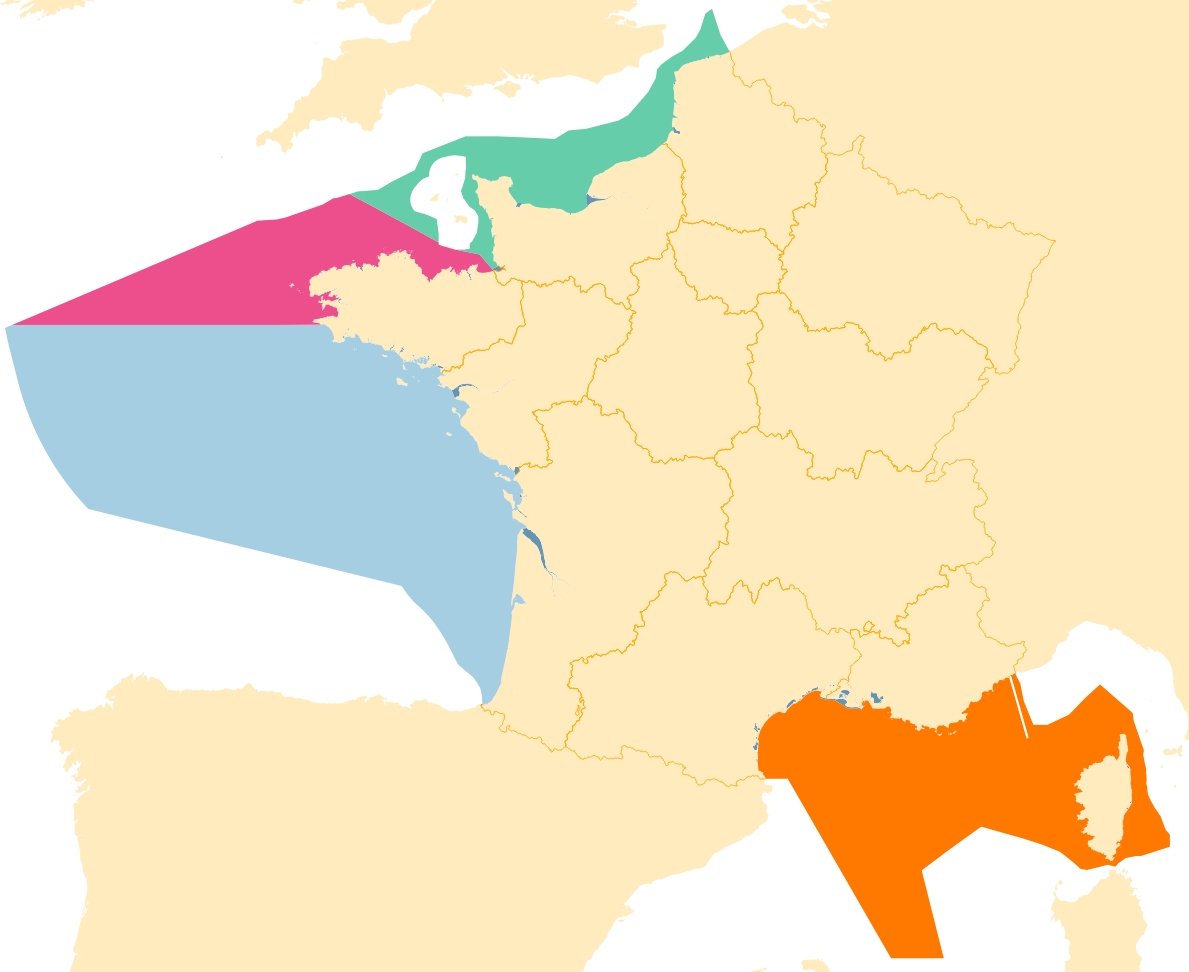
French marine's subregions: areas used under the Framework Directive strategy for the marine environment.
-
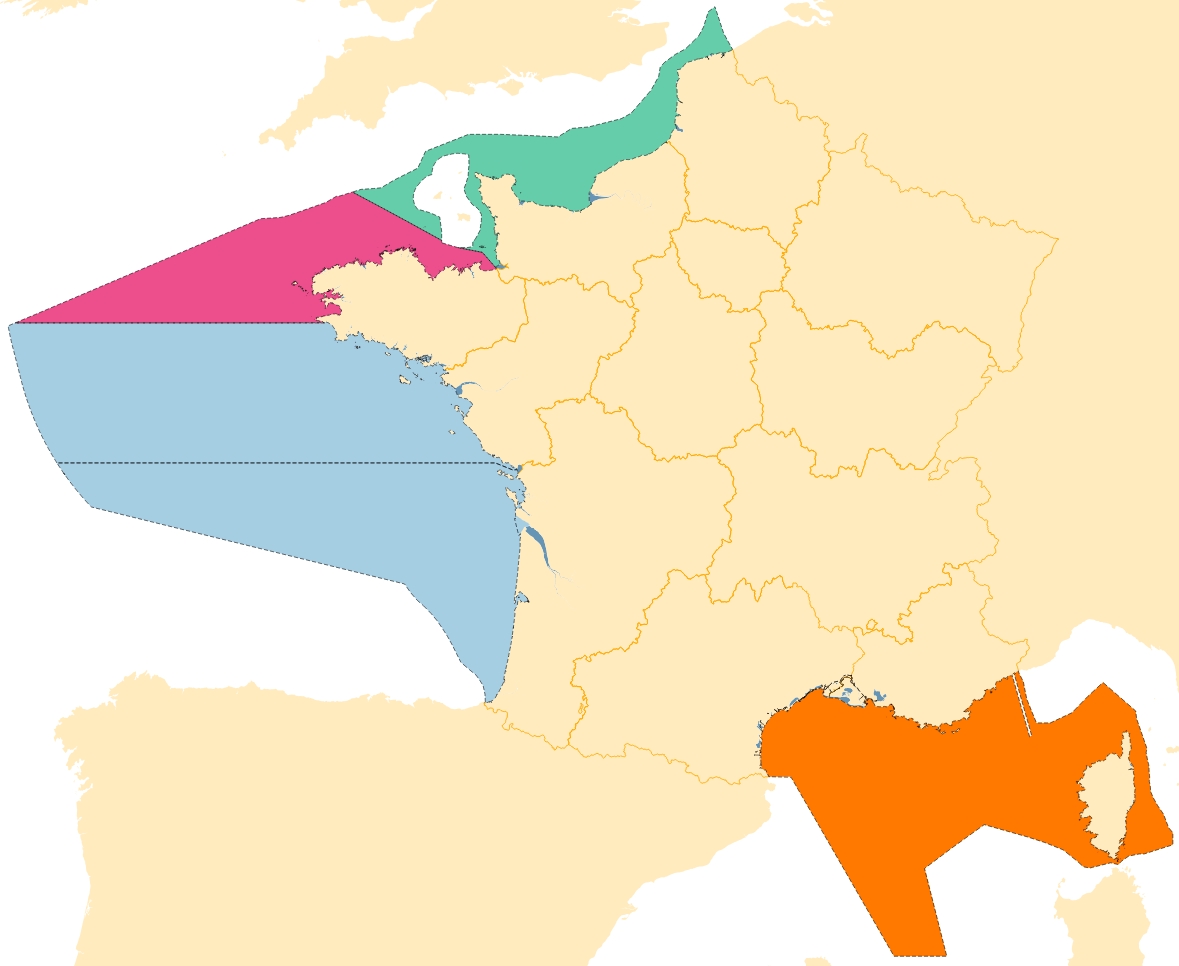
French Marine Reports unit of european marine's subregions: areas used under the Framework Directive strategy for the marine environment.
-
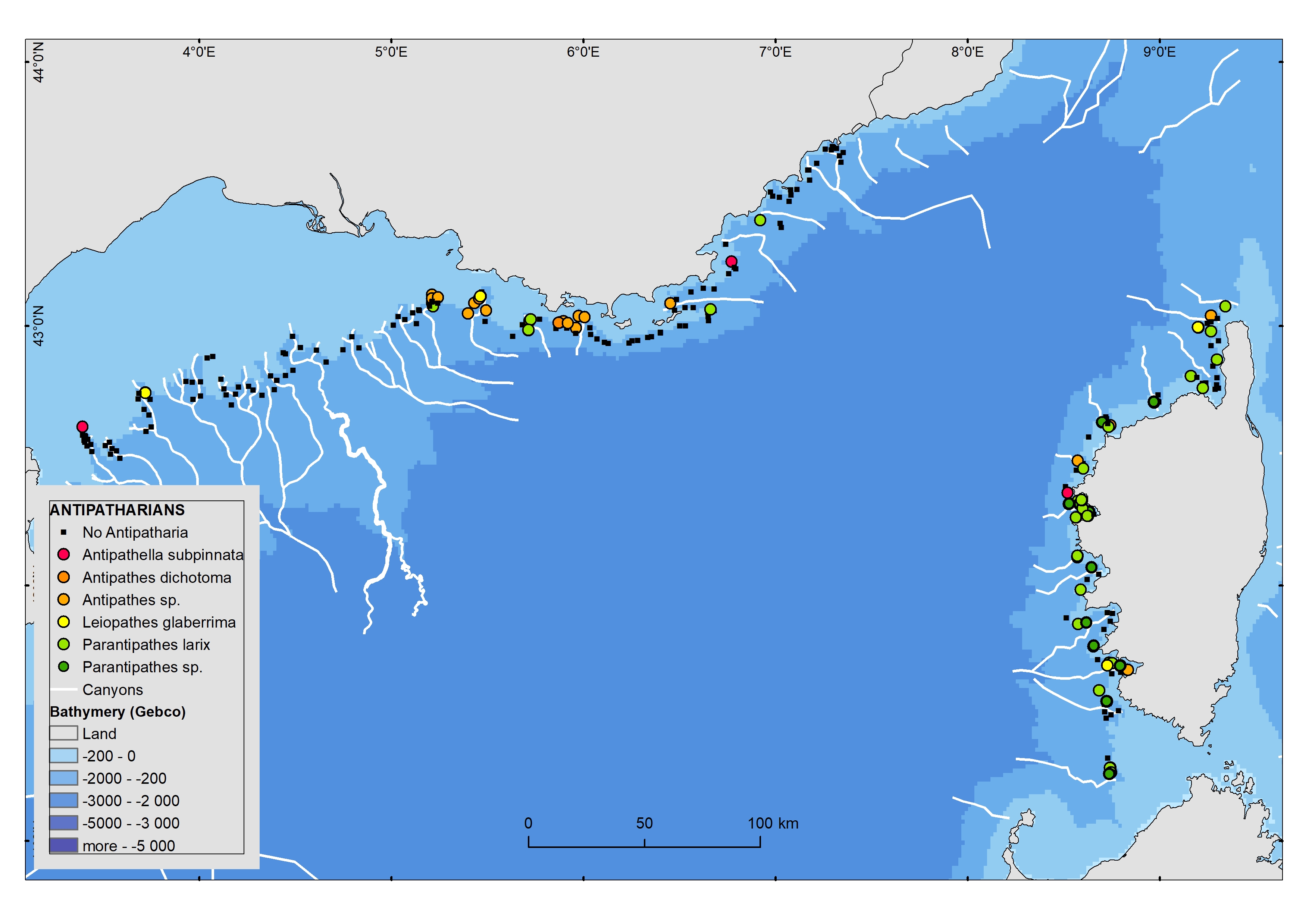
Data were extracted from videos recorded during MEDSEACAN_2009 and CORSEACAN_2010 cruises operated by Comex (Aamp funding). Underwater vehicles were either Achille ROV or Remora submersible. Video analyses were realized by Ifremer and GIS posidonie.
-
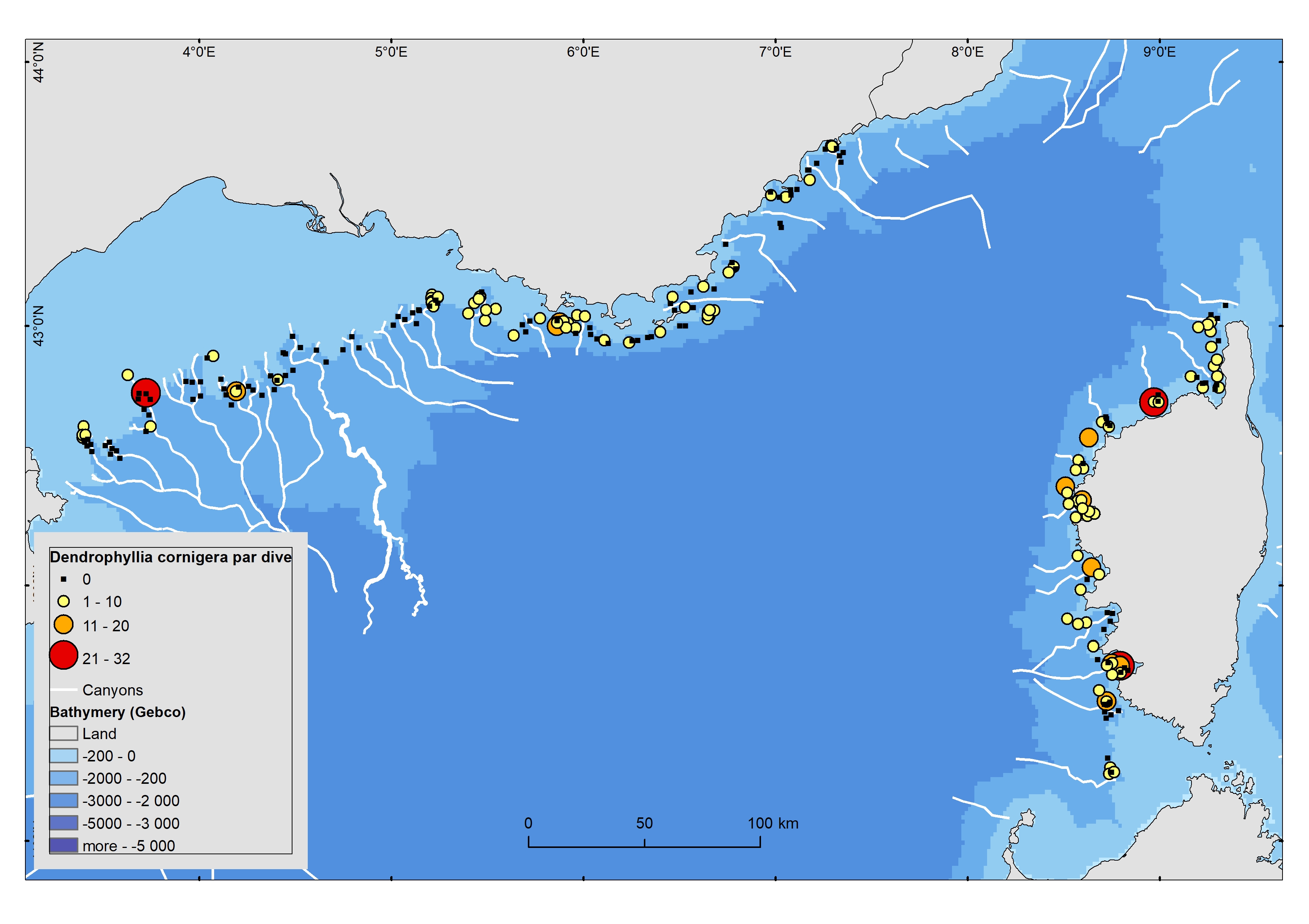
Data were extracted from videos recorded during MEDSEACAN_2009 and CORSEACAN_2010 cruises operated by Comex (Aamp funding). Underwater vehicles were either Achille ROV or Remora submersible. Video analyses were realized by Ifremer and GIS posidonie.
-
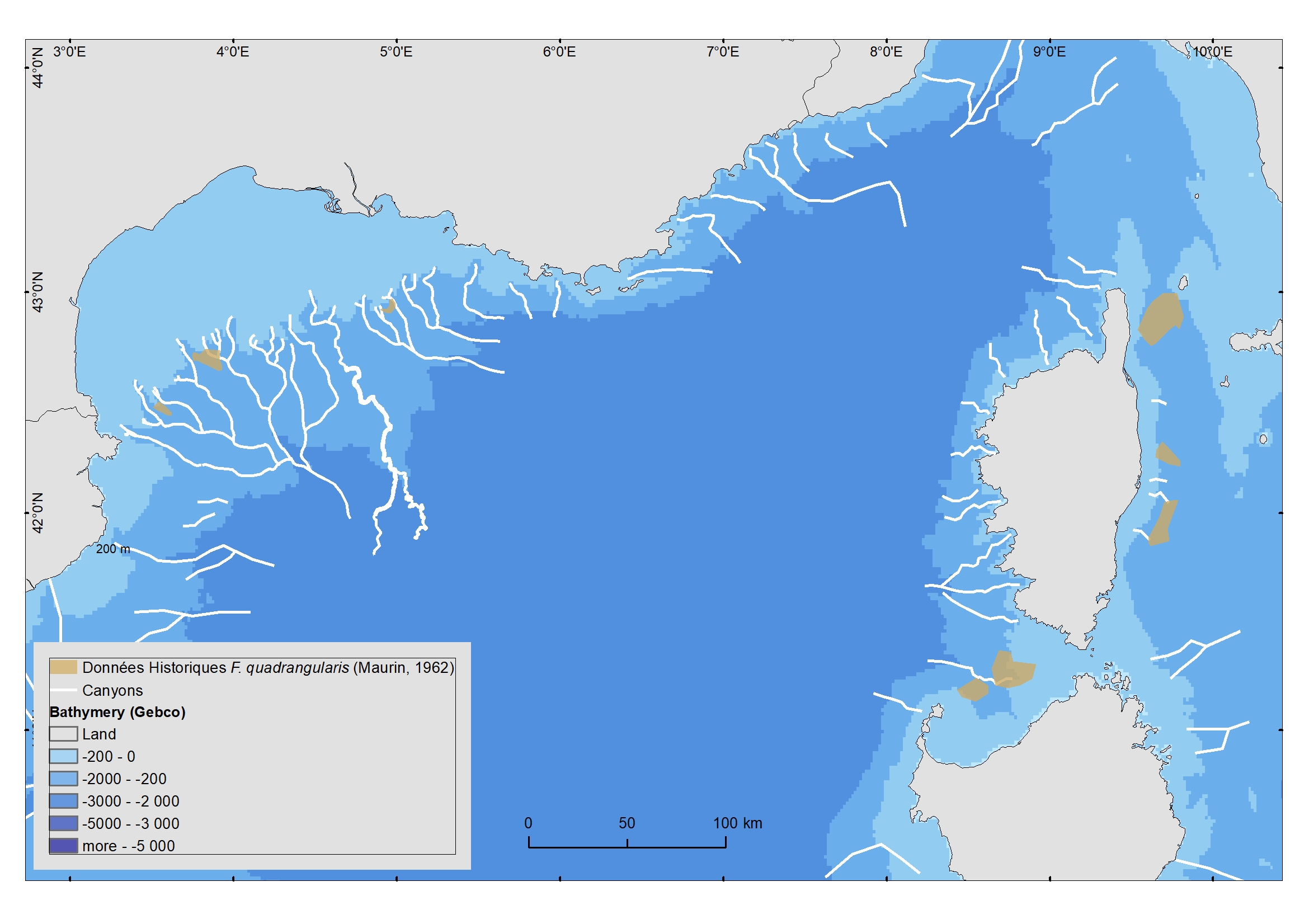
The distribution of the Vulnerable Marine Ecosystem Funiculina quadrangularis (Pennatulacea) was digitalized from a document edited in 1962 (Maurin, 1962).
-
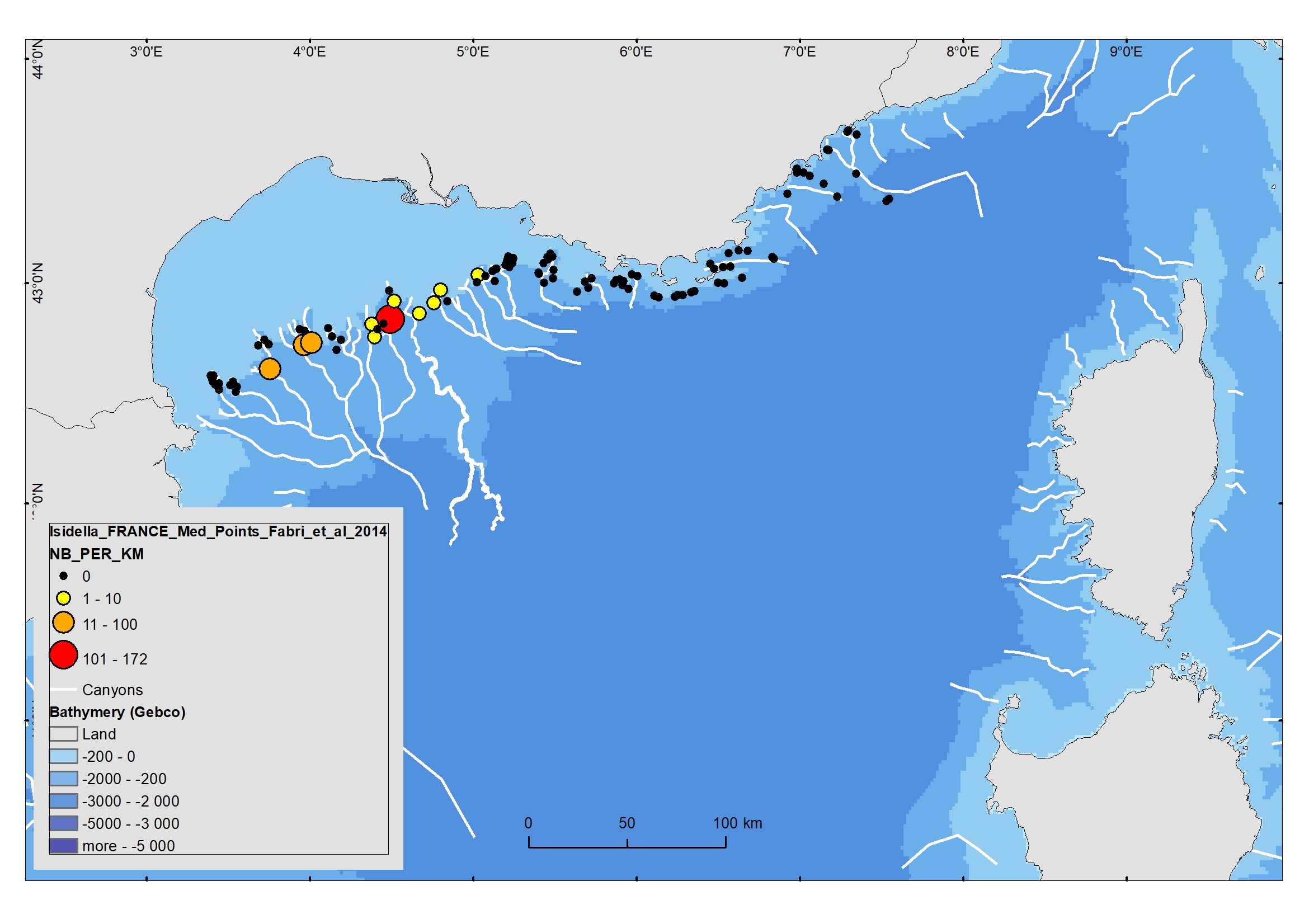
Compact mud facies with Isidella elongata is a relevant habitat for red shrimps (Aristeus antennatus and Aristaeomorpha foliacea). These habitats are potentially vulnerable as they are targeted by fisheries.These VME fauna seem to have been swept away by repeated trawling. Vulnerable Marine Ecosystems (VME) in the deep Mediterranean Sea have been identified by the General Fisheries Commission for the Mediterranean as consisting of communities of Scleractinia (Lophelia pertusa and Madrepora oculata), Pennatulacea (Funiculina quadrangularis) and Alcyonacea (Isidella elongata). This dataset concerns video data recorded in the heads of French Mediterranean canyons. Quantitative observations were extracted from 101 video films recorded during the MEDSEACAN cruise in 2009 (Aamp/Comex), in addition to 12 Ifremer dives. Species recognized in the video films were recorded from 180 to 700 m depth, and were mapped using GIS. Isidella elongata was abundant in three canyons of the Gulf of Lion (Bourcart, Marti, Petit-Rhône). This dataset is linked to the pulication Fabri et al, 2014. https://doi.org/10.1016/j.dsr2.2013.06.016
-
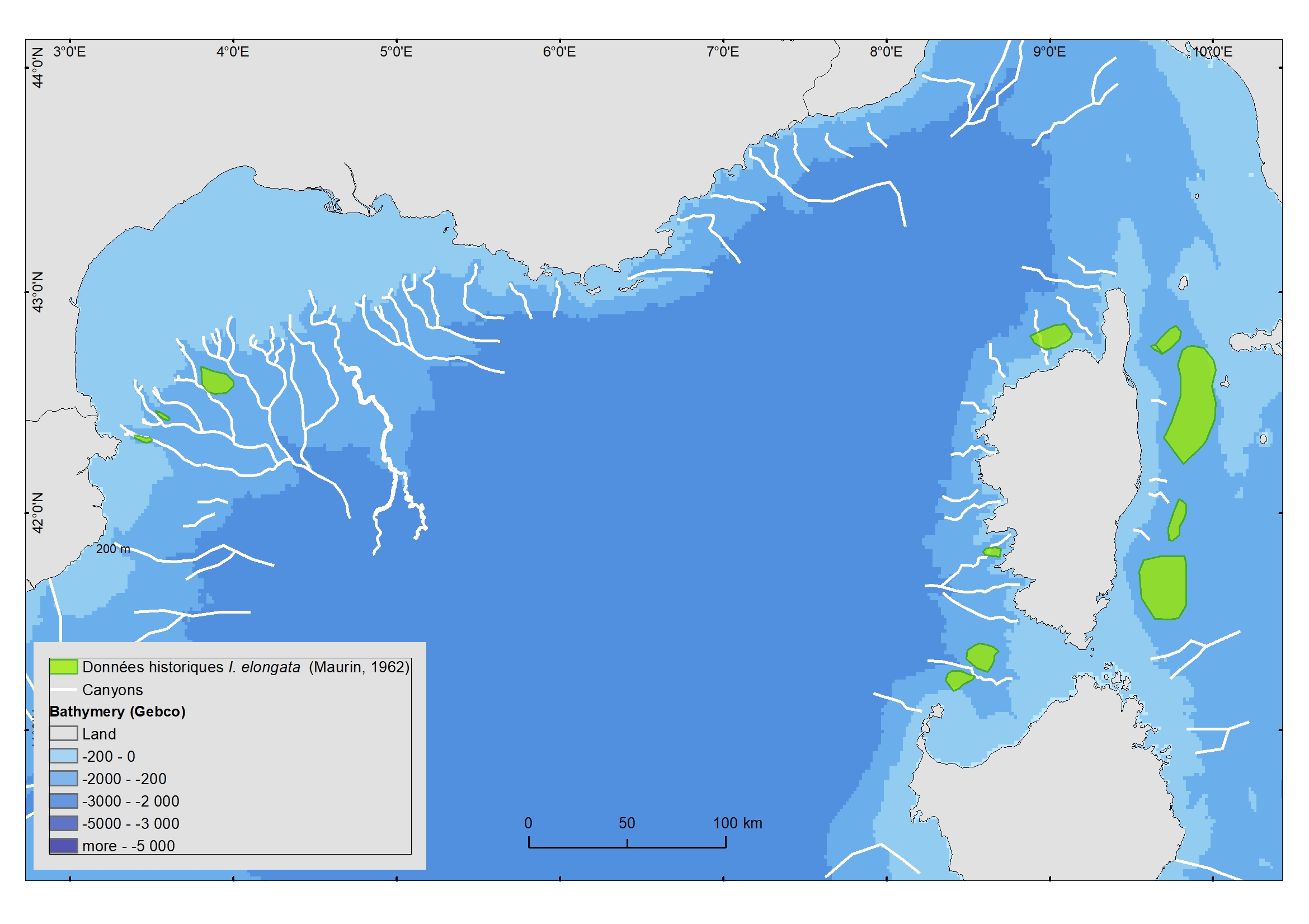
The distribution of the Vulnerable Marine Ecosystem Isidella elongata (Alcyonacea) was digitalized from a document edited in 1962 (Maurin, 1962).
 Mon GéoSource
Mon GéoSource